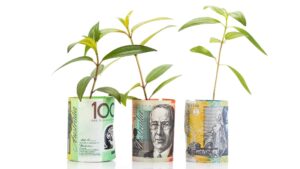


Ever since Vanguard’s Jack Bogle introduced index investing in the 1970s, it has had its detractors. Regardless, it has not only survived but thrived over time and is now a strategy that manages a significant and increasing proportion of the global investment pool.
Many questions are being asked about the impact of this trend towards passive investing. Does it weaken the market’s ability for price discovery, leading to less efficient markets and greater market volatility? Will the shift to passive investing eventually drive non-passive (active) investors out of the market, leading to an investment world of price takers?
Before addressing these issues there are a few key points worth considering/understanding.
- There are effectively two types of market participants, passive and active investors. Passive refers exclusively to (market capitalisation based) index investing. All other investment strategies are considered non-passive, or active.
- A passive strategy holds exposure to all securities within a market segment (say large companies) and allocates funds to each security in relative proportion to their market segment weight. For example, BHP representing 7.2% of the top 200 companies on the ASX would hold an allocation of 7.2% of a passively managed portfolio that tracked the top 200 companies.
- Each trading day, the relative weightings of each security will change in line with relative price changes. The passive manager, however, does not need to make changes to their underlying portfolio holdings. They will continue to be invested in each security in proportion to their relative weightings without the need for any corrective trading. This point is often misunderstood and is a key underlying feature of passive investing. The passive strategy meets its mandate each day regardless of the price action during the day. Hence the use of the term “passive” investing.
- Even quantitatively run “fundamental index” strategies,[1] such as value investing, require periodic adjustments to holdings to meet their mandate. They therefore fall into the active segment of the market.
- The return of passive and active investors, in aggregate, will be equal to the return of the market (before costs). The average performance of all passive investors will equal the market (segment) return before costs. This means the average performance of the active investor segment will also equal the return of the market (before costs). In other words, before costs, the average performance for the active segment will always equal the average performance for the passive segment.
- Active investors effectively trade with each other. For example, if an active investor chooses to purchase BHP because they believe it has relative upside, the ultimate seller of those BHP shares will also come from the active investor segment. This will occur directly or indirectly through the market. It does not mean that passive investors could not be on the other side of the trade, however ultimately the active investor segment will need to absorb this non-market capitalisation weighted change in exposure.
- Active investors are the price setters in the market. Passive investors are price takers. They do not set prices because they do not trade securities on a relative basis. They hold all securities equally, in relative proportion to their market capitalisation weighting.
- Prices can and will change with or without net fund inflows/outflows to a market.
- Net fund inflows/outflows to a market are expected to impact prices, however these flows represent active, not passive, decisions. For example, net fund inflows to the equity market will need to be funded by net fund outflows from another market, say, bonds. This is an active market decision that can move prices.
Why has passive investing gained such a large proportion of market share?
Free markets will move towards efficiency and the market has progressively eliminated many inefficient participants. Many of these inefficient participants have been relatively high cost, active managers who have been unable to consistently match the after cost returns of the more “skilled” active managers and low-cost passive managers.
If “skilled” active managers can consistently outperform low-cost passive managers (after costs), you would expect a shift back towards active management.
Is this reduction in the active investment segment affecting the market’s efficiency?
An efficient market needs active investors to be the ones setting the prices – they are the ones doing the fundamental work necessary to know what the securities themselves are actually worth. It is uncomfortable to think of a market that can function properly if the majority of its investors decided to go passive. This concern flows from the notion that active investors need to be able to control enough funds and funds flow to effectively do their jobs as price setters.
But setting a price in the market does not require controlling a significant amount of funds or flow of funds. It is simply about placing an order. If all but two investors in the market had opted to be passive, then the price within the market can still be set by those two investors (regardless of the size of their trades). All they need is a different view from each other and a willingness to trade on their view.
If the rise in passive investing is reducing market efficiencies, the active investment segment should be able to take advantage of these inefficiencies and ultimately reverse the current trend. Basically, if the market is becoming less efficient because of the growth of passive investing, the active investment segment should be thriving. Given we are not seeing this, it points to continued potential inefficiencies within the active investment segment.
Is it possible for the market to become totally passive?
While possible, it is highly unlikely.
The actual proportion of passively managed funds is difficult to gauge (and depends on the definition of passive). Estimates of the market share of passively managed investments range up to 50%. The proportion of passively managed investments operating within the large company segment is very high. Given this segment covers the majority of the global market capitalisation it is understandable that the overall passive market share figure is high. However, outside the large company segment, the market share of passively managed investments is significantly lower.
Despite this current trend, we are a long way off any move towards a 100% passive investment world. Every investor still makes a huge array of active investment decisions – decisions around their mix of defensive and growth assets, their domestic and international allocations, their asset class allocations, when to enter and exit the market.
All of these decisions are non-passive, personalised decisions that are expected to continue and thereby underpin price discovery and price setting long into the future.
If you are interested in more detail on this topic, we recommend further reading via Index Investing Makes Markets and Economies More Efficient, Philosophical Economics.
[1] Fundamental index strategies determine relative holdings by non-market related criteria, such as book value, sales, earnings, etc. Accordingly, they require corrective trading to allow for relative changes in book value.
